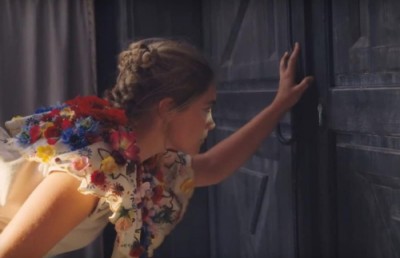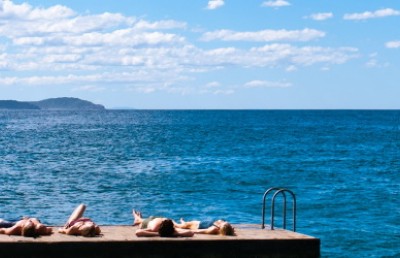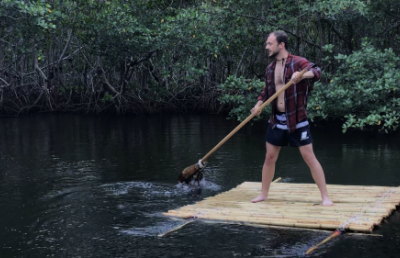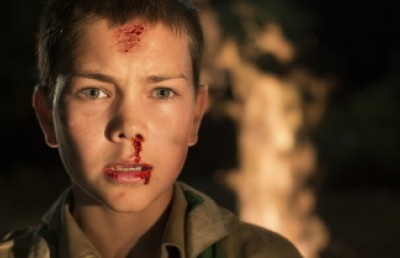The Isle Interview with Matthew and Tori Butler-Hart
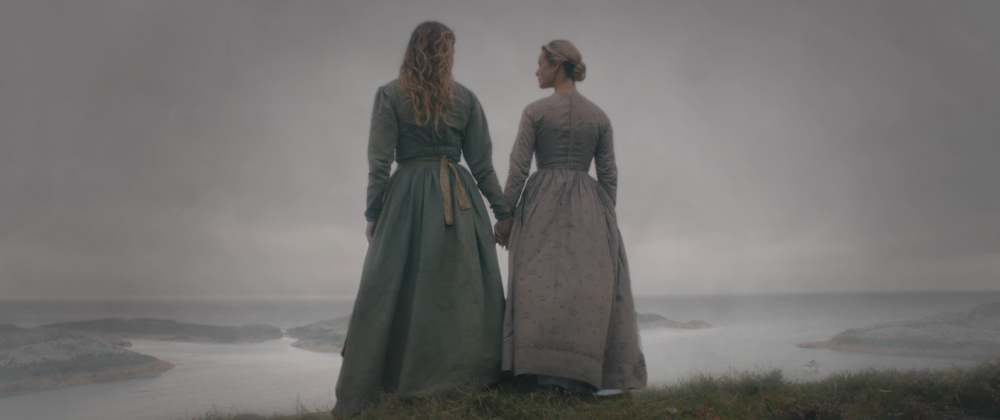
Husband and wife Matthew and Tori Butler Hart established the UK Independent Film Production company Fizz and Ginger Films in 2009. Both are trained actors and work in partnership to write their Feature Film productions, with Tori then both producing and acting and Matthew directing. This has resulted in a diverse range of film: contemporary Crime Drama Two Down (2014) contrasts sharply with Miss in her Teens (2014), a film adaptation of David Garrick’s 1747 play which, again, is in sharp contrast to their most recent production, The Isle (2018), a Supernatural Period Drama set on a remote Scottish isle:
Following a heavy storm, three survivors of a shipwreck row to the shore of a nearby island. There, they are quickly found and taken in by the island’s four sole residents. While all seems well during their recovery, the island begins to reveal its truth as a much-promised boat that will return them to the mainland never appears. As one of the sailors investigates, the myth of the Sirens who haunt the island begin to make themselves manifest.
While The Isle follows the production format Matthew and Tori have established by, again, sharing the writing credits and with Matthew directing and Tori producing and acting (as Lanthe Innis), The Isle also brings together what is emerging to be a considered company of acting talent from their previous features, including Conleth Hill (as Douglas Innis), Alex Hassell (as Oliver Gosling), Emma King (as Persephone/Lorna) and Graham Butler (as Jim Bickley), making the film very much a Fizz and Ginger Film production.
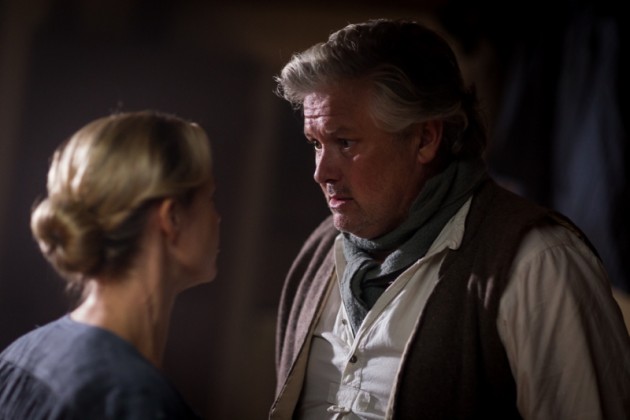
Tori Butler-Hart as Lanthe Innis & Conleth Hill as Douglas Innis
Following a tour of the International and National Film Festival circuit, The Isle has won numerous awards, including Best Narrative Feature Film at the 2018 Berlin Motion Picture Festival, Best Director at the 2018 International Independent Film Awards, Best Horror Film at the 2018 London Independent Film Festival as well as Best Cinematography at the 2018 Manchester Film Festival. Such accolades are unsurprising as the film perfectly blends the British penchant for Period Drama and the Ghost Story into a Gothic narrative of secrets, deception, seduction, and, of course, ghosts and murder. This is coupled with an appropriately haunting soundtrack and uncanny visual design, making The Isle a further excellent example of British Horror Film production.
The following interview took place at the end of the summer 2019, following the VOD, TVOD and DVD release of the film in the UK. The discussion focusses on the production processes involved in current independent British filmmaking as well as the wider framework of film production in soon-to-be Brexit Britain, genre hybridity and, of course, the value of ghosts in both these contexts. Please note this interview contains mild spoilers.
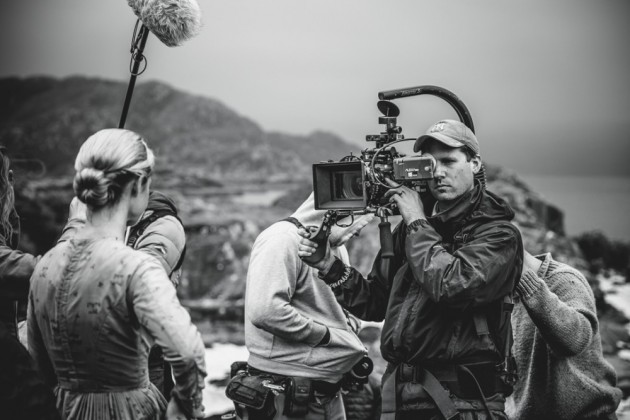
The Isle Set
Offscreen: Fizz and Ginger Films is an Independent UK-based Film Production company which you both established in 2009. What are your feelings about the current state of the British Film Industry and how does The Isle fit into this production landscape?
Wow that’s a big question. There are a few major things happening at the moment that are going to affect, and already are, everything in the UK film industry. Ever since the EU referendum result in 2016 a lot of film finance people became more restrained with their money as they were unsure as to what was going to happen with Brexit. A lot of productions are put together with co-productions, often with people in Europe so we know of various projects that were immediately put on hold. EU Media also contributes towards numerous UK films and that fund will now be unavailable. It also affects the sales and distribution side of things, and although that will be sorted out, any changes take time and have an effect on the now.
Since the crash of 2008 the government have pretty much stopped regional funding. This was where you could access funds from specific parts of the country if you filmed there. This used to be a great way of topping up missing gaps in the finance plan of a film.
So, schemes like the government SEIS and EIS way of funding were being used to get some of, or in some cases all of, the budget. This was effectively a tax incentive for wealthy people to get money off their tax bill, by investing in small companies. When you make a film, you have to set up a special small company so this is how producers could access cash. Recently the government decided that investing in film wasn’t risky enough – they’ve obviously never invested in a film – so put a stop to filmmakers being able to use the SEIS scheme.
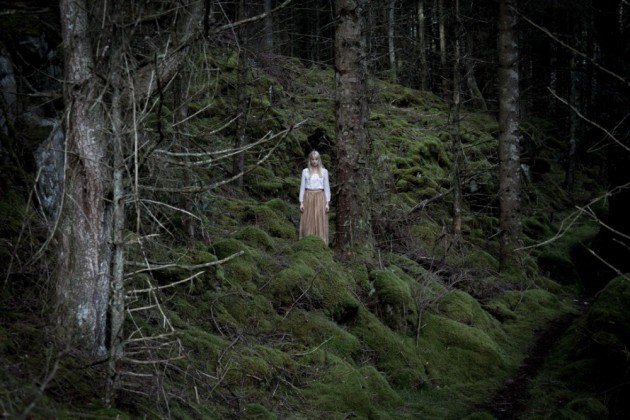
Persephone Tree Landscape
Offscreen: And how does streaming fit into all of this – is it a benefit or a burden?
New obstacles are the coming “platform wars”. Everything is moving towards online platforms, and specifically television and the platforms are fighting more and more for actors, writers and directors. This means that the money people are also going towards TV. In one sense it’s great that so much work is being created, but it doesn’t leave a lot for indie films, which is essentially what UK film is really. We know producers who have made big films with big names in the past who are now struggling to get the finance for films; this is in part because they need a named actor to get that budget, and those actors are going off to the much better paid TV shows, and the crews are following them, so even crewing up a film is getting harder at a certain level!
This does all sound quite pessimistic, but filmmakers always find a way to make great films. It just means another period where people are trying to figure out how on earth we get it financed in the first place. It might mean budgets will have to get smaller, again, and then you have the problem of not being able to afford the people you need. We’ll see what happens in the next few years!
We were very lucky with The Isle to have put it in place, filmed it and had a release in the U.S and UK just as things were changing. If we’d come along with it a little later, it might never have been made over here.
Offscreen: It is a predictable question, but it must be asked: where did the initial idea for The Isle come from?
We sort of worked backwards as in we found the location first and let it inspire what sort of story we would tell. In fact, we were invited to go and look at the island by the family who had always wanted something filmed on it, but when other producers had come to look at it they deemed it too difficult.
Rather than having a script that we would have to try and adapt the location to we studied the island to see what it could offer us, and how practical it would be to film there and let that set our parameters. It was looking into the history of the island that gave us the kernel of the idea. There was a thriving community until the 1800’s when a famine hit the area and within a very short space of time the island was deserted as people fled to the mainland in search of food and work.
Offscreen: How did the Supernatural elements of the story come about?
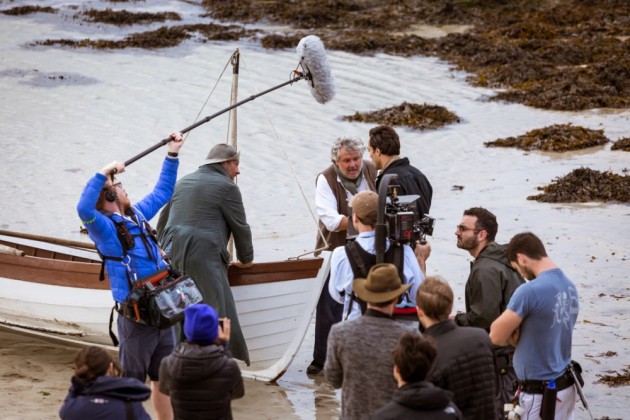
The Isle Set
We knew we wanted to look at something supernatural from just looking at the island and we now had the idea of some sort of famine and an almost deserted island. Originally we wanted to explore how women with mental health problems were treated in the Victorian era, and there are still elements of that, but as we started working with other people it gradually became more focused on the ghostly elements as, quite frankly, we were told it would be easier to get in front of an audience.
Matthew: I have always loved myths and legends and we looked into myths from the area but one of the ideas, that of kelpies, would have been too much of a stretch of our budget. But we wanted to stay with the idea of some sort of myth haunting the people on the island, whether it was actually what was happening or not, and this led us to the sirens.
Offscreen: How did you go about integrating the Greek Mythology of the Siren with 1846 Scotland?
It was really the real famine in the area that gave us the idea to bring in the Siren element. There are many versions of all the Greek myths and one that we liked was that Hades abducted Persephone to be his wife and it was her mother, Demeter, that wreaked a famine across the world for six months of the year until she would be brought back to her. The Sirens were women who were sent to find Persephone and when they failed to bring her back Demeter turned them into Sirens as a punishment.
We didn’t want them to actually be Sirens, but more that there were similarities to that story so that Fingal (Dickon Tyrrell) [the Harbourmaster] has a way of trying to understand what it is happening on the island. At the end of the day it’s really just an old-fashioned Gothic ghost story.
Offscreen: From a Genre perspective, The Isle has a certain hybridity to it – being a Period Drama with strong Supernatural overtones running throughout it. In terms of the time period, what research did you both undertake to enrich or make more real the narrative’s time period?
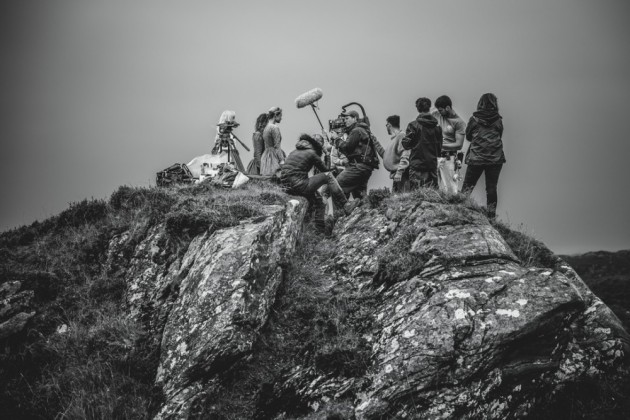
The Isle Set
That’s a very good point, in that we approached it first as a drama and then layered in the supernatural side so that it isn’t a classic Horror at all, which was always the idea of what we were trying to create.
As we mentioned as soon as we went to the island we started looking into the history of what life would have been like at that time on those rugged but beautiful islands. They were an entire community in themselves and often had nothing to do with the mainland so there was very much a feel that this was a whole world to a lot of these people.
We went to museums including a fantastic place on the isle of Skye, not far from where we filmed, where they’ve recreated a small island community along with stories of real people along with photographs of the actual people who lived there at this time. And that’s a point; although some people don’t realise it, photographs had been around for two decades by this point, so we had a lot of visual references to help us put together our world.
Of course, as it was essentially a story about ghosts, we allowed ourselves license to play around and make sure that whatever was best for the story would be done without restricting ourselves too much by history.
Offscreen: Did aspects of this research process bring any significant changes to the film?
To be honest not hugely. As we said we were inspired by the history in the first place so didn’t need to wedge anything on to that history too much, and used certain things, like people’s view of Lanthe’s epilepsy, to help inform us in the storytelling.
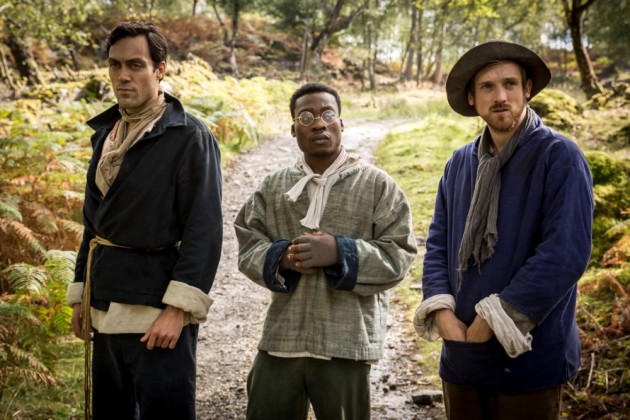
We looked at what ships would actually have been roughly in the area and used that to help bring a small lone merchant ship close to the area, and the local sailor’s belief in myths and monsters of the deep to naturalistically bring in fear of the unknown.
There were certain things that we wanted to do with the ghost and props, but when we looked at what was available in that period we realised some of our plans wouldn’t work because what we wanted to use didn’t exist yet!
Offscreen: Were there any influences on the film at this early stage – a book, film, play?
We didn’t want to reference any particular film, but as we’re big fans of films of the 60’s and 70’s there were of course subconscious influences and people have of course mentioned things like The Wicker Man. But instead of sending films out to the crew as one might sometimes to so they see the vibe of what you’re after, we sent music and pictures and paintings from the time that would capture the moods. When we were writing and filming it the phrase ‘folk-horror’ wasn’t as widely used by the general public, and although we still don’t call it a horror, we didn’t really have that sort of guide-line to work with to help instruct people as to what we were trying to make.
Offscreen: How does writing work as a collaborative process? Is there a fixed way in which you write together, or do you allocate each other certain scenes to write and bring them together?
It changes with each project that we work on really, each one is a slightly different process. On the whole we work very much together, so we’ll start by finding our characters, much like writing character breakdowns for each, we’ll work out what they’re like, what they do, and their backstories. This will then dictate a lot of how they will react to any given section. Then we’ll plot out the skeletal structure of the story. What scenes we know we definitely need in order to tell the story. Once that’s done, we can start to write the actual scenes and see where the gaps are that need to be filled. If one of us is working on something else at the time, then we might write a scene remotely and then send to the other to look at, but on the whole, we’ll be sitting next to each other. One will be doing the writing; we’ll keep stopping to discuss the scene and the dialogue and then continue when we’re both happy with the scene. Tori tends to write a lot of dialogue, which Matt trims down and Matt tends to write a lot of the actions sequences which Tori forgets to describe or elaborate on.
Offscreen: When writing do you hold back in relation to an estimated budget or do you write in sympathy with the idea and the characters and then strip back if need be?
We always write with budget in mind. It’s the producers in us probably. As wonderful as it would be to write scenes with no limitations of cost, it’s just not realistic for us. Unfortunately, we’re nowhere near big studio budget levels and when we’re writing it’s always with the intention to actually make the film eventually, therefore it’s hard to ignore the question of cost even at script stage. But that’s helped us to get stuff made because when any interested finance party reads our script, they can see that it’s contained and achievable. It also helps us to construct a realistic budget from early on, one which we can confidently deliver on. We also write with locations in mind as well, again helping to keep a firm grasp of what is doable and what isn’t and what the costs might be. Of course, once a script is completed and we’re in the pre-production or even production stages, there’s always elements that you might have to compromise on or adapt.
Offscreen: Women lie at the core of the film – they are both feared by the men and protected by them. Can you discuss the role of the women in the film for you: was your approach to their representation fixed or did it evolve during the writing process?
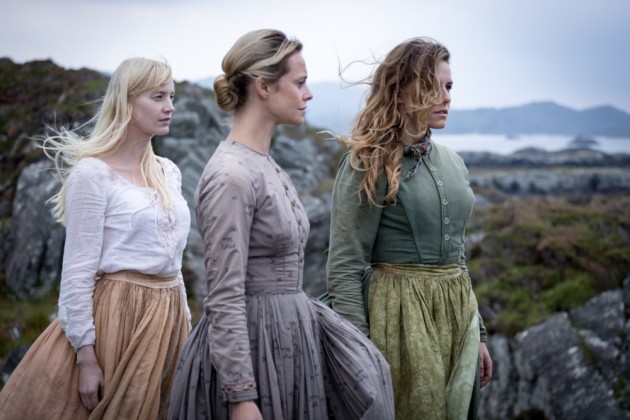
That’s interesting, when we started writing The Isle, it was before the #me too movement and so we weren’t consciously making a comment on what was happening in our current society and how that might be reflected in the Victorian era, although that’s sort of what’s ended up happening. Although our female characters are fearful of the men and Persephone’s revenge is the direct result of the actions of a male sexual predator, they are in the end the most powerful characters and hold total control over the men, though it isn’t immediately apparent.
We were interested in how women were treated in the 1800’s especially those suffering with epilepsy who were regarded as being possessed and contained in asylums for mental illness. Lanthe’s character is locked in a room and tied to her bed, partly for her own protection and partly through fear of what was causing her to fit. She breaks her confinement in the end, which allows her and Korrigan to make their final decision to take control and set themselves free. We perhaps would have gone further in exploring the psychological effects on the women and less of the possession as such, but the finance company, Great Point Media, were keen to push the supernatural elements and overall more commercial genre aspects of the film.
Offscreen: When we met at the Everyman, you commented that you were “very much about the visuals”. Given this, is storyboarding part of your Production Process and, if it is, how important are they to you?
For us film is very much a visual medium and we feel that it is the visuals that should be at the forefront of the storytelling. The text is the blueprint with which to build the visuals, and therefore the world, around. So storyboarding is a huge part of the process right down to how many shots of tress and rocks and waves we see, and also for how long.
They also help hugely when you’re working with a modest budget and time is against you for all sorts of reasons. We were shooting on a remote Scottish island with no roads, no transport and nothing to help if things went wrong. So with the storyboards we knew exactly what had to be shot to make sure we got the film we needed. We were against time also because we were losing two of our main actors so we needed to plan everything to within an inch of its life as we couldn’t come back for pick-ups with actors.
Matthew: From my point of view I always think of filmmaking like conducting a symphony. Every story beat and cut and tempo is very specific to the storytelling and the only way I can get that across to everyone is by using storyboards. I can’t draw for toffee and end up doing the basic stickman pictures, but they’re so useful when you’re on set.
I talk with the DOP and editor before we even start shooting to discuss what will work and what won’t so when we get to filming, and then editing, we already know as best we can what is needed and what is achievable. Especially when things go wrong on set so we knew what beats we had to hit to make sure we got what we absolutely had to have to need to make it work, even if it’s not entirely what we had planned.
Offscreen: You are both trained actors: what does this bring to the filmmaking process in your varied roles as writers, producers and director?
From a writing point of view, we do approach the text very much through the character’s eyes. We spend a long time creating the characters and often let them inform us what they should say. It usually means that the characters are pretty well formed and even smaller characters can be fully fleshed-out 3D people rather than coming across as ‘devices’ even though at the end of the day that’s all they all are, as they’re there to serve the story. As we’re writing we can act out scenes to see if the beats and tempos work. It also means that the lines actually sound like a human would say it rather than the actor having to work out how to make it work, or trying to rewrite it to make it work.
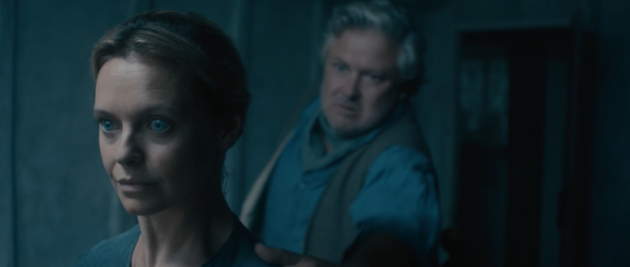
Shocking Blue eyes
Matthew: It also means that I know how to talk to an actor to get the best out of them as I went through the same training as them and can usually find ways to help navigate them through scenes or lines to make the best of every moment, and that’s with the text but also on the visual storytelling side from the actors too. Or at least I try my best!
Offscreen: Matthew, can you talk about directing actors. Is directing Tori as an actress on The Isle different to directing the other cast members – I ask not necessarily because of your relationship but more that Tori co-wrote the film.
We spend a lot of time working through the script before we ever get to set to make sure we’re on the same page and ironing out any problems in advance of being getting anywhere near the camera. I like to rehearse as much as I can too in the weeks leading up to production, and almost treat it like a piece of theatre when we’re at that stage, dissecting every line and scene until we know how the scene will be. This also helps me with knowing how to shoot it. On The Isle we had a lot less time so I had to work with the actors individually whilst we were in pre-production and then rehearse the night before each day’s lot of scenes. Any amount of rehearsal is going to save you time when you’re finally shooting though and you can spend more time on the minute moments rather than having to work out where everyone is sitting and when they move.
It is different directing Tori as she’s been involved from the very beginning and is the main producer as well as co-writer. But she’s brilliant at being able to switch from writer/producer to actor, which makes my life very easy, and having such an intimate knowledge of the script, and having an insight into the bigger picture of how the film will look, means she’s on board with the feel and vibe of what we’re trying to achieve right from the off.
Of course, there are moments when the husband and wife element come into play and we probably let our frustrations show more than if we were just director and actor. But the crew always find it funny so we can use it to keep them amused!
Offscreen: The film does have a (unsurprising) preoccupation with the landscape of the island. Does the island itself become a character? Why all of those lingering shots of the trees?
It absolutely becomes a character, and I know that can sound like a bit of a cliché, but it was always the intention to make it feel like Persephone and the island were one, so wherever the sailors were, they were always being watched.
We mentioned the beats and tempo of the story and we used the island, the lingering shots of trees bending in the upcoming storm, to help us moderate the pace. We never wanted The Isle to be a typical pacey jump-scare sort of film; we wanted that slow-burn, slow-creep feel instead of relying on things jumping out of dark corners and without those lingering shots it’s much harder to create it. We tried with less and then with more and it’s a very fine-line between it being indulgent and there for no reason and it being a huge part of the story itself.
Offscreen: What was an average day like whilst filming on location for The Isle?
There was definitely no such thing as an average day on that island! It had its own weird micro-climate, or at least felt like it did, so each part of the island seemed to have completely different weather at the same time.
We were filming fairly late in the year on the island and daylight that far up can be fairly scarce. This did mean that sometimes we could get things in the morning that would pass for the evening, and as we had quite a lot at night we could have two sessions of darkness in one day. With that comes its own problems though as when the sun went down, and it could disappear in a matter of minutes, it was utterly pitch black. We had tried to time it so we were filming certain scenes when there was a full moon though, so had an excuse to actually have light in some of those night time scenes.
A lot of our planning went towards trying to cope with the Scottish weather and the tides. We had tide charts and were checking weather reports constantly but we found that neither seemed to be able to predict things accurately. Beaches that should have been there according to the charts were fully underwater when we arrived at the specific time, so we would have to quickly think of an alternative and redirect the cast and crew to new sites that the whole team might not have seen.
We tried to get ahead of this kind of madness by having big meetings in the evening with all the Heads of Departments so go through exactly what would be happening the next day, and problem areas that might arise and what we’d do if yet another location was swallowed by the sea. We would all eat amazing home cooked food whilst we did this as we’d imagined that being on an island and filming in the freezing North Atlantic for weeks would create some big appetites and we’ve always known the best way to keep a crew happy, apart from paying them on time, is to feed them well.
Offscreen: While there were probably many issues with filming on a remote Scottish island, what were the benefits?
The benefits far outweighed the problems and it was the reason we knew we could shoot a fairly ambitious period film on such a modest budget. The scenery is utterly stunning and there is almost nothing modern, even the cottages, wherever we pointed a camera. Every part of the island was also entirely different from each other too, giving us lots of options to have different visual emotions depending on the scene. We could bring in visual subliminal clues as to what was happening by using the locations cleverly.
For the actors, and the whole crew as it turned out, being on an isolated island really made it easy to buy into the story and it fed into the general feeling of the film and I think you can see it on screen. You didn’t have to imagine what it was like to be hours from civilisation when you looked out to sea, or that it was dangerous to be out after dark with trees creaking in the storm, it was all there. For everyone involved on the creative side it really made our job so much easier.
Offscreen: How much of the film is actually location work and how much is constructed set?
The entire film is on location with the majority on the island. Although we talked about some things being a set, or maybe a water tank for the boat and underwater scenes, we decided to have as much reality in there as we could. I honestly think the audience can feel when something is a set sometimes, especially on an indie film where money can be tight sometimes. There’s a real bonus to the authenticity of being in the actual location.
Offscreen: Were the Interiors actually filmed on the island or somewhere else?
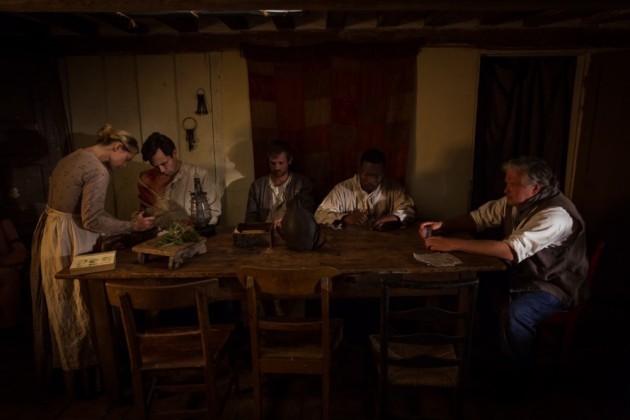
Most of the interiors were actually filmed elsewhere though in an old 17th century cottage that had been kept, including a lot of the furniture, as they were at that period. This meant we just had to bring in some more up to date, as in 19th century, pieces but a lot of the set was as you see it. We’d found the location a while before so we adapted the script to work with the cottage to get the most out of it.
We would have loved to have filmed the interiors on the island, and Korrigan’s cottage was up there, but the buildings were either modernised inside or still as they were when they were abandoned so too dangerous to film in.
The problem we had was that because of actor’s dates we had to film the interiors first so then had to try and guess the lighting states and weather of what the island would be like so when an actor was being watched from inside to outside, the two shots – Douglas inside looking out, and the shot through the window of Lanthe and Korrigan – were filmed two weeks apart with very different weather states. We made it work through grading and sheer luck though.
Offscreen: What were the most difficult scenes to film?
As we mentioned we were never in water tanks so any time we see the actors in boats, even if it’s pitch black and freezing cold it was done for real. Although it gives it a sense of reality, trying to create that reality with little control made it very hard. The North Atlantic sea is genuinely treacherous if you venture too far from the island and so choppy that it made it impossible to film anything.
The boats we had were real row boats but all seemed to have leaks so when Ferris is bailing out, he actually had to do that. Also trying to light boats that were actually out on the water was difficult and we had to use moonlight and augment it as best we could.
Offscreen: Were any scenes cut from the film? Why?
The only scene that we cut was at the end when Gosling is trying to make his escape. Originally he bumps into Korrigan in the woods and she seduces him. Douglas and Fingal arrive to rescue him and take him to the boat to escape the island. In the edit it felt like it took away from the momentum that had built and so we ended up using clips of the scene to edit into the earlier scene when Lanthe seduces Gosling. It actually worked better as a device to help convey Gosling’s feelings of disorientation and confusion; one moment he’s with Lanthe in the bedroom, the next with Korrigan in the woods.
Offscreen: Can you talk about the Original Soundtrack – how do you go about creating this part of your film? Did you provide any written/visual material for the composer – Tom Kane – or did you let him approach the film without notes?

Tori: Matt and Tom talked a lot about the score before he saw the film and composed the music. The whole sound design was always going to be a big part of the film, as it’s about sirens and a song that lures men to their death, we always had to have something that was truly enchanting and otherworldly. There were various references that Matt gave Tom, like Last of The Mohicans, but mainly we just wanted to keep a very Celtic sound without going down the bagpipe route. The bodharn drum gives an immediate Celtic feeling while adding tension and a single fiddle helps to create the haunting solitary sound of the isolated island. We were incredibly lucky with the song; the lyrics are from the mid 1800’s and describe a woman mourning the loss of the lover at sea. Tom put the lyrics to an original score and then found Eivor, a Faroese singer, who recorded an incredible demo and we knew immediately that that was our sirens song.
Offscreen: I am I correct in recalling that there are few to no animal sounds within the film? If I am correct, why did you remove these natural sounds?
You’re absolutely right. As we mentioned, the sound design was a very important element to creating the overall feeling and tone of the film. Even from the script stage we had notes on sound. By removing all bird song and enhancing the wind it helped us to build the eerie atmosphere of the island.
Offscreen: What was your approach to the Sound Design of the film?
Our editor Will Honeyball also created the sound design, he was with us while we were filming and so could grab wild tracks of the island then and there which we then used in the edit. Every single sound we recreated in Foley, adding to and enhancing the quality of the sound design. For the final 5.1 sound mix we spent a long time balancing the levels of all the cues, especially in the sequence when Gosling and Bickley are out at sea. We shot the scene at night out on the water, almost in total darkness, with just the light from the moon and some mist. The entire scene is about what they can hear rather than what they see, so we had to create a believable soundscape to convey that.
Offscreen: Now that the film is complete, is there an image – or images – from the film that have embedded themselves in your filmic thinking?
Wow, that’s a tricky question. We talked about this and probably the image that has stayed with us both and that nearly all advertising and articles have used are the images from the final scene with the three women high up on the cliff top overlooking the sea and Gosling sailing away. It conveys the whole story; the stunning scenery, the tragic isolation and the haunting mystery. It has taught us the importance of having an iconic image that will not only stay with the viewer but help to convey the essence of the film.
The Isle received its theatrical and digital release in North America in February 2019 with the film opening theatrically a month later in the UK. The film is now available via VOD, TVOD and DVD.


